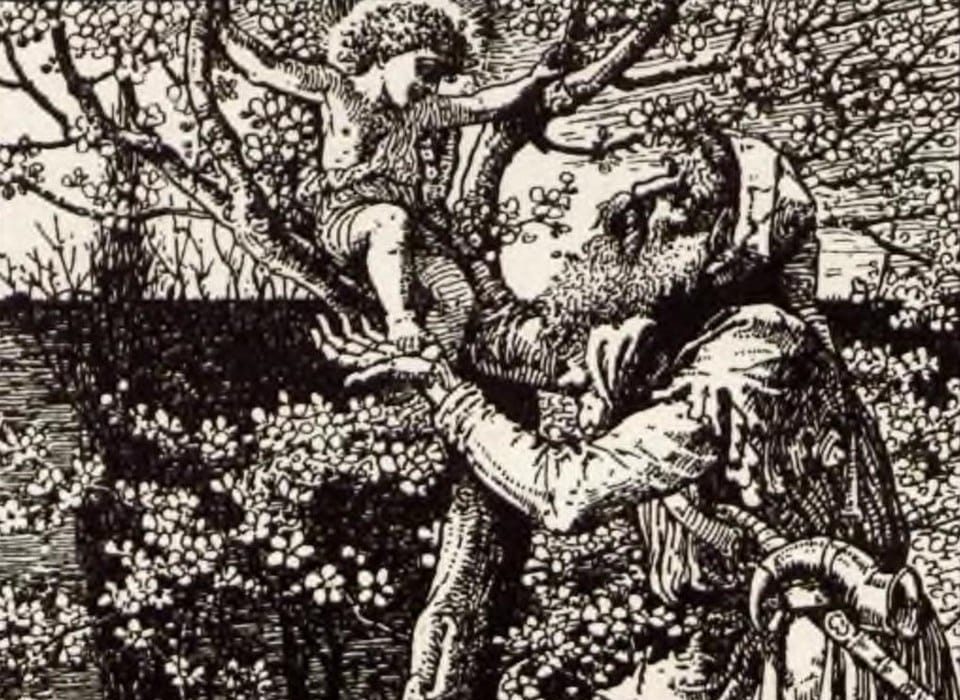Legends are a big part of oral storytelling. They help humans understand their past and create engaging stories where there are none. The folkloric Bigfoot is such a story because of its plausibility and what it symbolizes in the vast American wilderness. In this post, we are going to define a legend and see how Bigfoot fits within that definition.
What is a legend?
Legends share many of the same qualities as myths—supernatural stuff, unbelievable characters, etc.—but the major difference is that they come from the recent past, are historical in nature, and are passed from one generation to the next.
Origins
The folkloric Bigfoot arrived in Northern California in 1958 after journalist Andrew Genzoli of the Humboldt Times “thought the mysterious footprints ‘made a good Sunday morning story’” (Little). Though little more than a fluff piece for the paper, the story sparked a huge amount of interest with readers, and so the Bigfoot legend was born out of continued attention and press.
And believe me, there is a lot more to the story, with sightings, pictures, audio, and video as pervasive as the footprints found in the most forested regions in America.
As far as the believability of these pieces of “evidence,” writer Ben Crair addresses what most skeptics already know about the history and reliability of the legend of Bigfoot. He states that Bigfoot “is not the first fabled hominid to roam North America.” In fact, he writes that “Sasquatches” have been a tradition in the myths of Native Americans and groups of indigenous people in the “Pacific Northwest.”
He writes: “… those 1958 footprints transformed the myth into a media sensation. The tracks were planted near Bluff Creek in Northern California by a man named Ray Wallace—but his prank was not revealed until his death in 2002, when his children said it had all been ‘just a joke’” (Crair).
In other words, the legend is most definitely a hoax, but what makes it interesting is how the legend surrounding it creates a lasting impression on readers and researchers. The folkloric Bigfoot may just be an invention of eager explorers and researchers, but it has an important role in our American lore.
Legendary Importance
Legends and myths have staying power through their use in traditions and oral storytelling. If you are a writer, this should be important. Because the way we tell stories shares a lot with writing narratives or using rhetoric to persuade and argue claims. Stories rife with pathos or logos can convince us of reality—just like the legend of Bigfoot.
As stated by some sources, stories aren’t just things we relay around “a pool of lamplight in a nursery or round a campfire” (Health Foundation). Rather, stories exist each day and we engage with them often. Consider the amount of times you tell a person a story in one day, or a book you read. Additionally, they appear in our movies and shows, and in the advertisements targeted at us online.
That’s one major reason why reading fairy tales, or folklore, or legends, or myths is important–because they are apart of a our very being. Regardless if it is just a big hairy cryptid tromping through the woods.
Works Cited
“The Power of Storytelling.” Health Foundation. Dec. 12, 2016. Web. https://www.health.org.uk/newsletter-feature/power-of-storytelling
Little, B. (2018, July 30). How the Bigfoot Legend Began. History.com. https://www.history.com/news/bigfoot-legend-newspaper.
Crair, B. (2018, September 1). Why Do So Many People Still Want to Believe in Bigfoot? Smithsonian.com. https://www.smithsonianmag.com/history/why-so-many-people-still-believe-in-bigfoot-180970045/.





Leave a comment